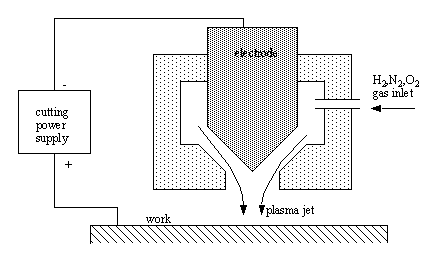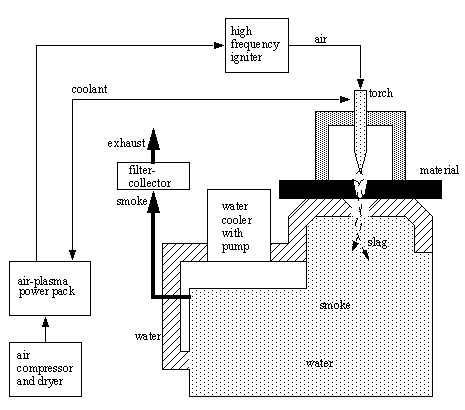1. AIR-PLASMA CUTTING• Basic process - uses an ionized gas jet (plasma) to cut material • can be used on all materials that conduct electricity • can be used to cut materials resistant to oxy-fuel cutting, • Plasma is generated by exposing a gas stream to the electrons from an electric arc. High velocity electrons generated by the arc impact gas molecules, and ionize them. 
• The gas is forced through the nozzle, and the jet heats the metal, and blasts the molten metal away. - 3 to 5 times faster than conventional gas cutting - can deal with any conducting material, including those not suited to normal gas cutting. - works best on ranges from .03” to 1” - More efficient than other types of gas plasma - can cut up to .15 m/sec continuously. 
• Summary of Air-Plasma characteristics, - mechanics of material removal - melting - maximum temperature = 16,000C - maximum velocity of plasma jet = 500 m/sec - specific energy = 1000 W/cm3/min - maximum plate thickness = 200 mm (depends on material) - cutting speed = 0.1 to 7.5 m/min - critical parameters - voltage, current, electrode gap, gas flow rate, nozzle dimensions, melting temperature - materials applications - all conducting materials - shape application - cutting plates 1.1 REFERENCES1.2 PRACTICE PROBLEMS |